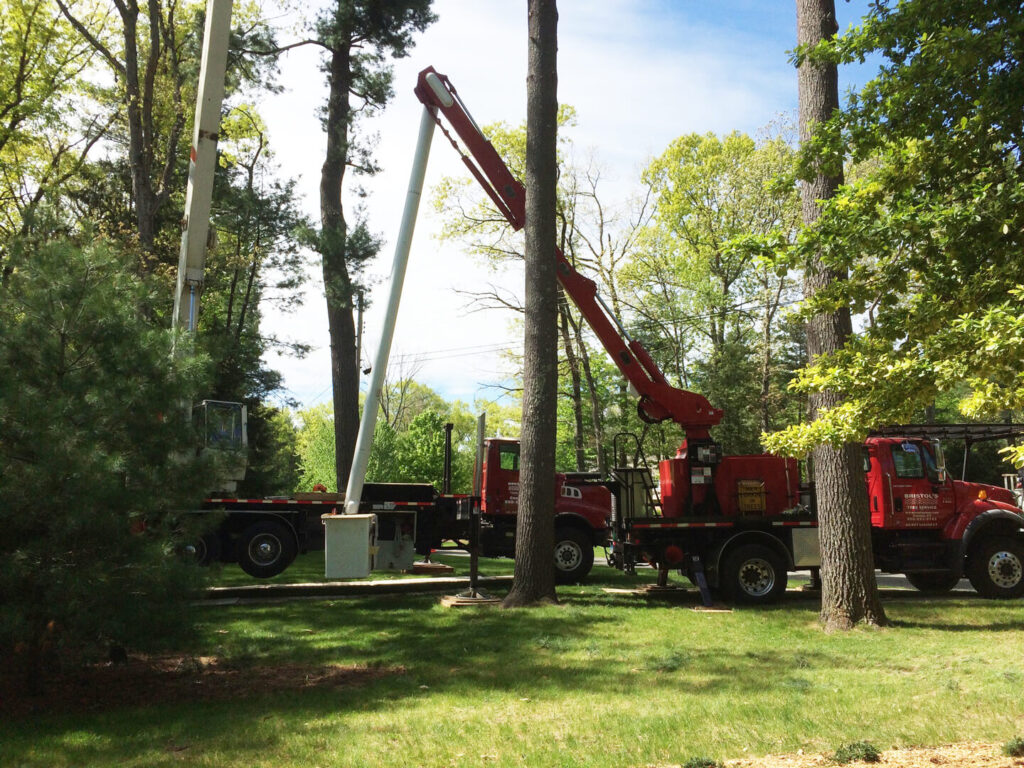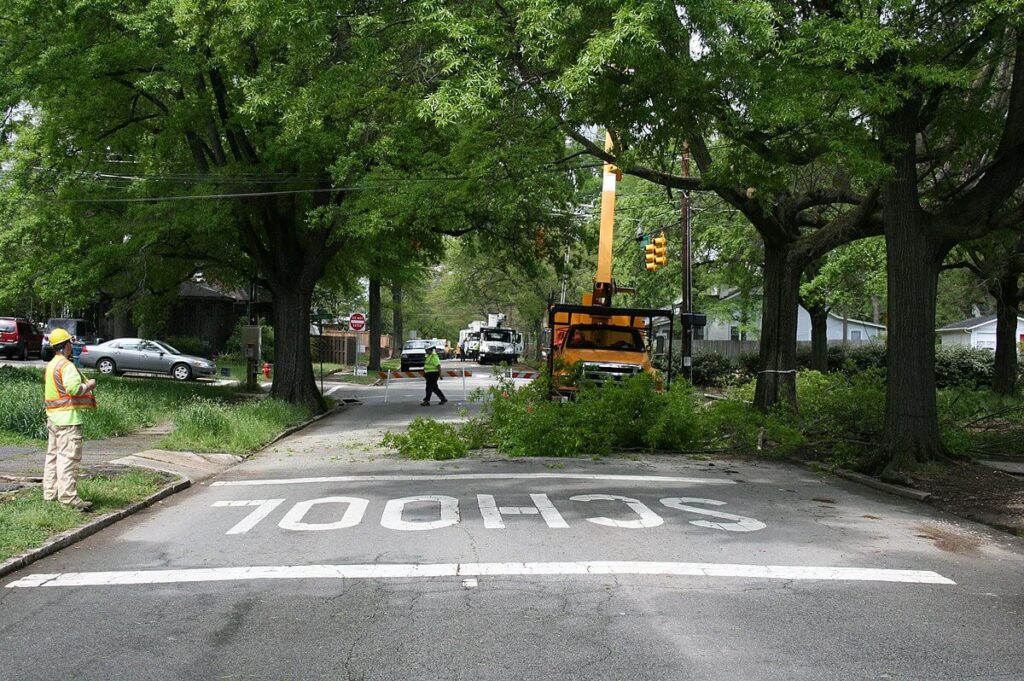In recent years, there has been growing awareness about the need for eco-friendly practices in various industries. One such industry is tree removal, which often involves the use of heavy machinery and chemicals that can have a negative impact on the environment. In the picturesque region of the Blue Mountains, where nature thrives and conservation is paramount, it is crucial to adopt eco-friendly tree removal practices.
Understanding the Importance of Eco-Friendly Tree Removal
Traditional tree removal techniques can cause extensive damage to the surrounding environment. The use of heavy machinery can disrupt the soil structure, leading to soil erosion and loss of nutrients. Moreover, the felling of trees can disturb the delicate balance of ecosystems, affecting the habitat of various species and disrupting natural processes.
By embracing eco-friendly tree removal Blue Mountains practices, we can mitigate these adverse effects and promote sustainable forestry practices. It is essential to recognize the value of trees in maintaining a healthy environment and acknowledge the crucial role they play in combating climate change.
When it comes to eco-friendly tree removal, there are several key considerations to keep in mind. One important aspect is the use of specialized equipment that minimizes soil disturbance. For example, instead of heavy machinery, arborists may employ techniques such as hand pruning and tree climbing to carefully remove trees without causing unnecessary harm to the surrounding soil and vegetation.

Additionally, eco-friendly tree removal practices often involve the implementation of erosion control measures. This can include the installation of erosion control blankets or the strategic placement of mulch to prevent soil erosion and promote the retention of nutrients. By taking these measures, we can ensure that the ecosystem remains intact and continues to provide essential services to both humans and wildlife. Click here for responsible tree removal.
The Impact of Traditional Tree Removal on the Environment
The conventional methods of tree removal involve clear-cutting large areas, leading to deforestation and the destruction of valuable habitats. This indiscriminate approach not only reduces biodiversity but also increases the risk of soil erosion and water runoff. In addition, the use of machinery powered by fossil fuels contributes to air pollution and greenhouse gas emissions.
However, with eco-friendly tree removal practices, we can minimize these negative impacts. For instance, instead of clear-cutting, arborists may opt for selective cutting, which involves carefully choosing which trees to remove based on factors such as age, health, and location. This approach allows for the preservation of healthy trees and the maintenance of a diverse and resilient forest ecosystem.
Furthermore, eco-friendly tree removal practices often prioritize the use of alternative energy sources. Instead of relying solely on fossil fuel-powered machinery, arborists may utilize electric or battery-powered equipment, reducing both air pollution and noise pollution in the process. By embracing these sustainable alternatives, we can contribute to the overall health and well-being of the environment.
The Role of Sustainable Practices in Conservation
Eco-friendly tree removal practices prioritize sustainability and conservation. By using sustainable methods, such as selective cutting and replanting, we can minimize the negative impact on the environment while still meeting the needs of society. These practices aim to strike a balance between human activities and nature, ensuring the long-term health and vitality of the Blue Mountains’ forests.
Through sustainable practices, we can contribute to the conservation of native species, preserve biodiversity, and protect fragile ecosystems. By embracing these principles, we can create a harmonious coexistence between humans and nature.
Moreover, sustainable tree removal practices often go hand in hand with community engagement and education. By involving local communities in the decision-making process and raising awareness about the importance of eco-friendly practices, we can foster a sense of ownership and responsibility towards the environment. This can lead to a more sustainable and resilient ecosystem, benefiting both present and future generations.
In conclusion, eco-friendly tree removal practices are crucial for preserving the environment and promoting sustainable forestry. By minimizing soil disturbance, implementing erosion control measures, and utilizing sustainable methods, we can ensure the long-term health and vitality of our forests. It is through these efforts that we can protect biodiversity, combat climate change, and create a harmonious coexistence between humans and nature in the Blue Mountains and beyond.
Principles of Eco-Friendly Tree Removal
When it comes to eco-friendly tree removal, there are several key principles that should guide our actions:
Minimizing Damage to Surrounding Vegetation
During tree removal, it is essential to take measures to minimize damage to surrounding vegetation. By employing skilled arborists who can carefully assess the area and strategically remove trees, we can minimize disturbances to the ecosystem. Avoiding unnecessary cutting and preserving as much vegetation as possible are crucial steps in the preservation of the Blue Mountains’ natural beauty.
Skilled arborists are trained to identify the best approach to tree removal, considering factors such as the tree’s size, location, and health. They carefully plan the removal process to minimize any impact on nearby plants and vegetation. By using specialized equipment and techniques, they can ensure that the removal is done with precision, avoiding unnecessary damage to the surrounding environment.
Furthermore, eco-friendly tree removal practices also involve the use of environmentally friendly tools and machinery. Low-emission chainsaws, for example, reduce air pollution and minimize the carbon footprint associated with tree removal. By prioritizing the use of such equipment, we can further minimize the negative impact on the ecosystem.
Efficient Use of Removed Trees
In eco-friendly tree removal practices, it is essential to maximize the use of removed trees. Instead of simply disposing of the timber, efforts should be made to find sustainable ways to utilize it. This can include turning the wood into useful products, such as furniture or building materials, or processing it for use as biomass fuel.
By partnering with local artisans and craftsmen, the removed trees can be transformed into beautiful and functional pieces of furniture. This not only reduces waste but also supports local businesses and promotes a sustainable economy. Additionally, using the timber for building materials can contribute to the construction of eco-friendly structures, further promoting sustainable practices.
Another way to efficiently use removed trees is by processing them into biomass fuel. Biomass fuel is a renewable energy source that can be used for heating, electricity generation, and even transportation. By converting the tree waste into biomass fuel, we can reduce our reliance on fossil fuels and contribute to a greener energy future.
Moreover, eco-friendly tree removal practices also involve recycling other parts of the tree, such as branches and leaves. These can be turned into mulch, which can be used to enrich soil, prevent weed growth, and conserve moisture. By utilizing every part of the tree, we can minimize waste and promote a circular economy.
In conclusion, eco-friendly tree removal practices prioritize minimizing damage to surrounding vegetation and maximizing the use of removed trees. By employing skilled arborists, using environmentally friendly tools, and finding sustainable ways to utilize the timber, we can ensure that tree removal is done in an environmentally responsible manner. By following these principles, we can protect the natural beauty of our surroundings and contribute to a more sustainable future.
Techniques for Eco-Friendly Tree Removal
Implementing eco-friendly techniques in tree removal is crucial to minimize the impact on the environment. Some effective techniques include:
Low-Impact Cutting Methods
Instead of clear-cutting large areas, eco-friendly tree removal practices prioritize selective cutting. This method involves carefully choosing which trees to remove based on factors such as their health, age, and impact on the ecosystem. By selectively removing trees, we can limit the disturbance to the surrounding vegetation and maintain the integrity of the forest.
Safe and Sustainable Disposal of Tree Waste
Proper disposal of tree waste is another important aspect of eco-friendly tree removal. Instead of burning or burying the waste, it can be recycled or repurposed. For example, branches and leaves can be chipped and used as mulch or compost, while larger timber can be processed and used for various purposes. Recycling tree waste helps reduce landfill waste and promote a more sustainable approach to tree removal.

Regulations and Guidelines for Tree Removal in the Blue Mountains
In the Blue Mountains, tree removal is subject to local environmental laws and regulations. These guidelines aim to protect the natural environment and ensure that tree removal is carried out in a responsible and sustainable manner.
Local Environmental Laws and Regulations
The Blue Mountains National Park is a UNESCO World Heritage site, and as such, it is protected by strict environmental laws. Tree removal within the park requires approval and must adhere to specific guidelines to minimize the impact on the delicate ecosystems. Additionally, local councils have their own regulations regarding tree removal on private properties, emphasizing the need to preserve the region’s natural beauty.
Compliance with National Forestry Guidelines
Tree removal practices in the Blue Mountains also need to comply with national forestry guidelines. These guidelines provide a framework for sustainable forestry practices and ensure that tree removal is carried out in a way that is environmentally responsible and economically viable. By adhering to these guidelines, we can contribute to the long-term conservation of the Blue Mountains’ forests.
The Future of Tree Removal in the Blue Mountains
As we look to the future, it is evident that eco-friendly tree removal practices will play a vital role in ensuring the preservation of the Blue Mountains’ natural environment. However, it is essential to embrace innovation and seek continuous improvement in these practices.
Innovations in Eco-Friendly Tree Removal
Advancements in technology and machinery offer exciting possibilities for eco-friendly tree removal. For example, the development of electric-powered machinery reduces reliance on fossil fuels and minimizes air pollution. Additionally, the use of precision cutting techniques can further enhance the efficiency and effectiveness of tree removal while minimizing the impact on the surrounding environment.
The Role of Community in Sustainable Forestry Practices
Engaging the local community in sustainable forestry practices is crucial for the success of eco-friendly tree removal in the Blue Mountains. By raising awareness about the importance of conservation and involving community members in decision-making processes, we can foster a sense of responsibility and ownership for the region’s natural resources. Community-led initiatives can contribute to the long-term sustainability of the Blue Mountains’ forests and ensure their preservation for generations to come.
In conclusion, eco-friendly tree removal practices are essential in the Blue Mountains to minimize the negative impact on the environment while meeting the needs of society. By understanding the importance of eco-friendly practices, adhering to principles that prioritize sustainability, and utilizing techniques that minimize damage to the surroundings, we can ensure the long-term health and vitality of the region’s forests. Through compliance with local and national regulations and embracing innovation, we can shape a future where tree removal is carried out with utmost care and consideration for the natural environment. Engaging the community in sustainable forestry practices further strengthens our commitment to preserve the Blue Mountains’ unparalleled beauty for future generations to enjoy.

